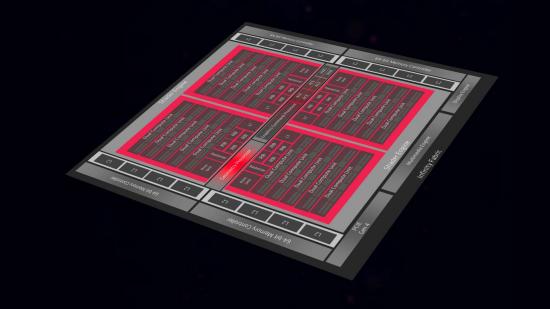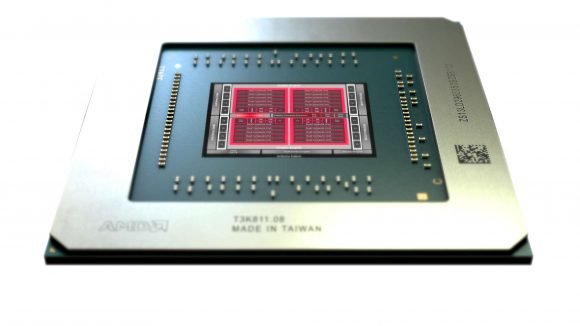Eight Navi GPU variants have been spotted in Linux driver code. AMD’s next-gen RDNA graphics chips are set for launch on July 7, 2019 within the RX 5700 XT and RX 5700, but the red team has plenty of silicon in store for a range of applications. Including console, laptops, desktop, and mobile phones.
The GPU codenames were spotted within Linux display drivers after the additional code was submitted and signed off by two AMD employees. The code adds support for Display Core Next, or DCN2, which “is the display block for Navi10.” Each entry following adds the necessary ASIC IDs for each Navi chip in the stack, starting with Navi 10 and down to Navi 21 LITE.
Each entry features a stepping code from A0 to B0. So far only the Navi 10 LITE GPU entry warrants the B0 stepping, while all others remaining on A0. Entries are also given either the P or M designation, although what this means exactly is unclear at this point in time. With such varied use cases for Navi going forward, these slight changes, along with the LITE designation, could be the difference between mobile, desktop, or even power-limited GPUs.
Spotted by TUM_APISAK on Twitter, there are four GPUs with the LITE codename and four without. These are:
- NV_NAVI10_P_A0 = 1,
- NV_NAVI12_P_A0 = 10,
- NV_NAVI14_M_A0 = 20,
- NV_NAVI21_P_A0 = 40,
- NV_NAVI10_LITE_P_A0 = 0x80,
- NV_NAVI10_LITE_P_B0 = 0x81,
- NV_NAVI12_LITE_P_A0 = 0x82,
- NV_NAVI21_LITE_P_A0 = 0x90,
- NV_UNKNOWN = 0xFF
There’s also an unknown code in the mix, too. Just in case.
Navi 10 refers to the GPU found within the RX 5700-series graphics cards. Both the RX 5700 XT and RX 5700 were announced over at E3 during AMD’s Next Horizon Gaming event.
Navi 12 is expected to make up the mid- to entry-level GPU lineup – discrete graphics cards that will take over from where the RX 560 left off with Polaris. Following that same rationale, Navi 14 would be an entry-level part.
While mostly conjecture at this point, the Navi 21 ID has been put forward as a professional/workstation GPU. This, however, seems somewhat unlikely due to AMD’s commitment to the compute-friendly GCN architecture in the professional market for the foreseeable future, leaving the custom-built for gaming RDNA architecture to mop up the rest.
Find out more: Here’s everything you need to know about the RDNA architecture
“AMD has had a long history of architectures in the GPU space. We love GCN, GCN has been a great architecture for us, and, frankly, you’re going to continue to see GCN as we go with new versions of Vega and many of the high-compute workload applications.”
So there’s still a bit of mystery surrounding that particular part’s purpose. It could even be AMD’s ray tracing solution. This is set to arrive in consoles – both Microsoft’s Project Scarlett and Sony’s next-gen PlayStation – in 2020, so that’s got to be floating about somewhere by now. It wouldn’t be the first time Linux code has uncovered console hardware – last year Sony’s programmers were spotted making changes to AMD Ryzen support within the LLVM stack.

